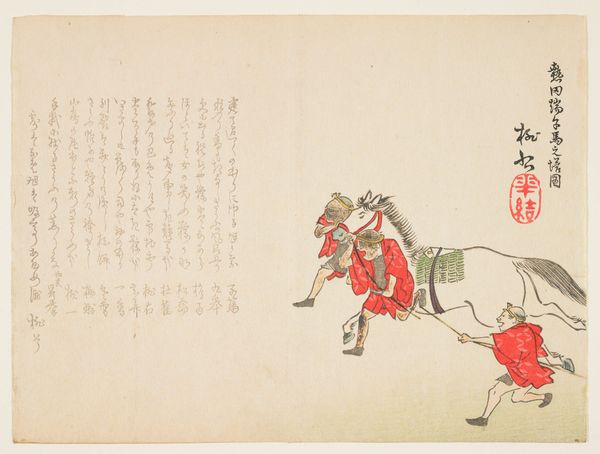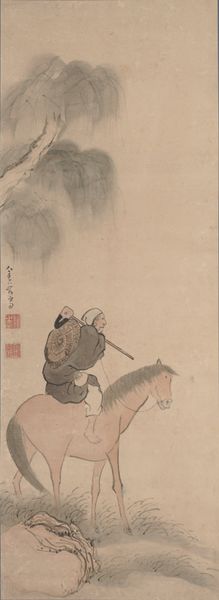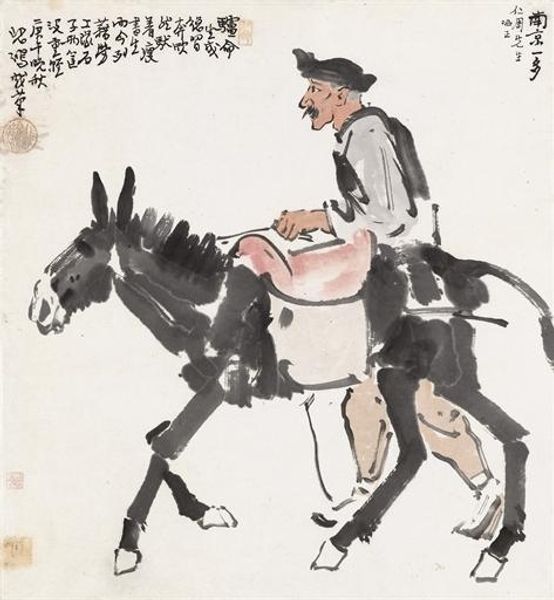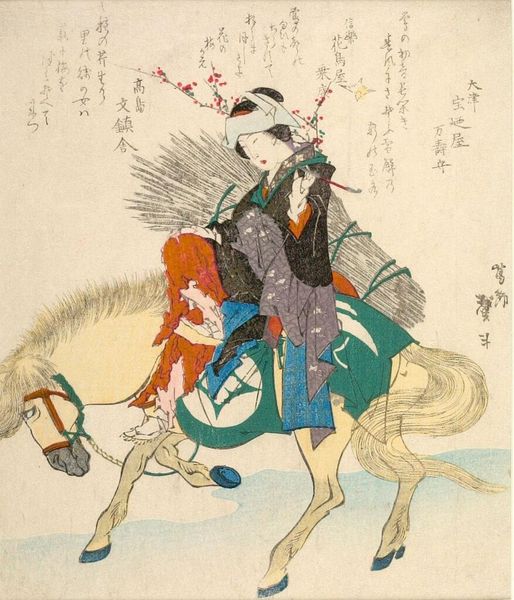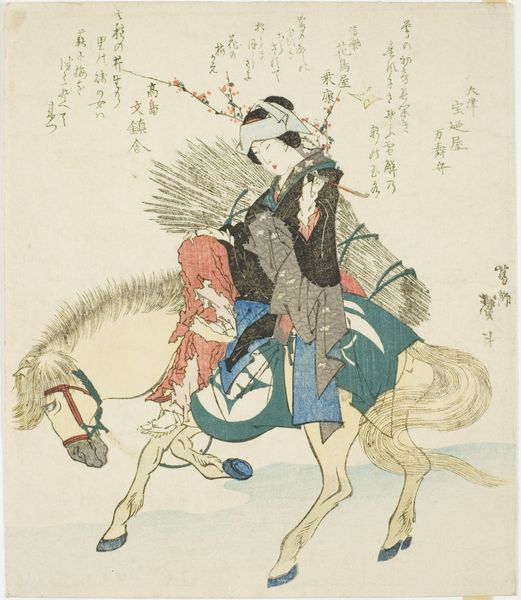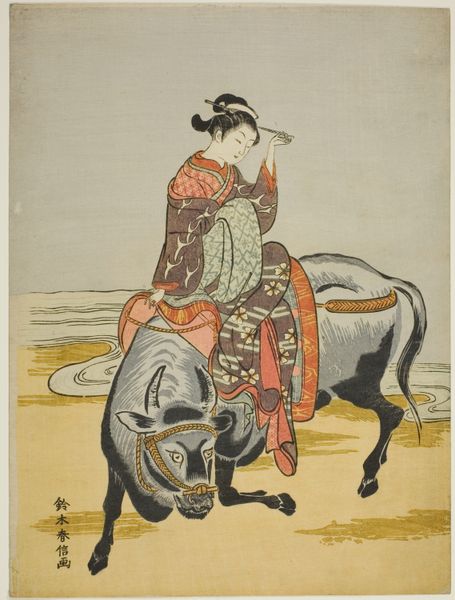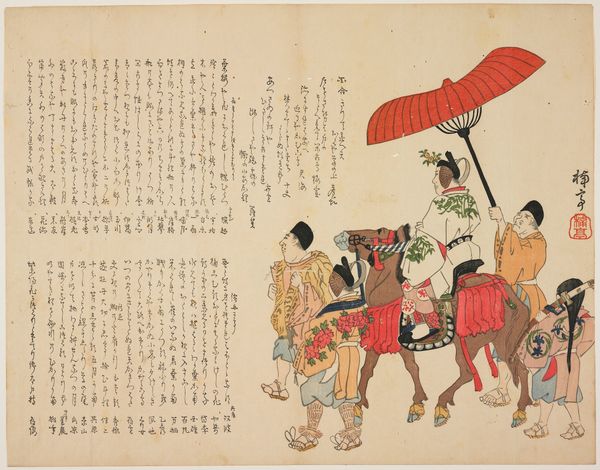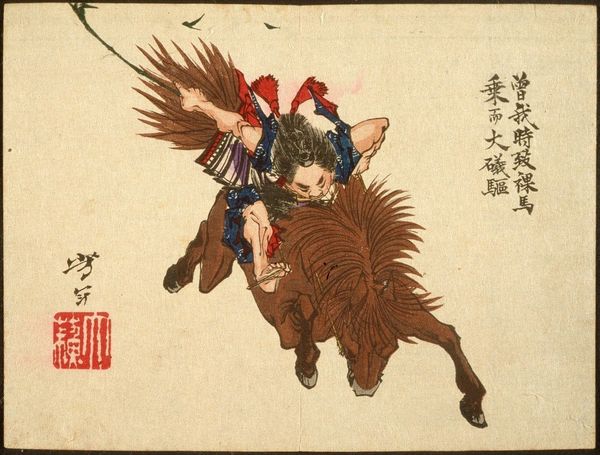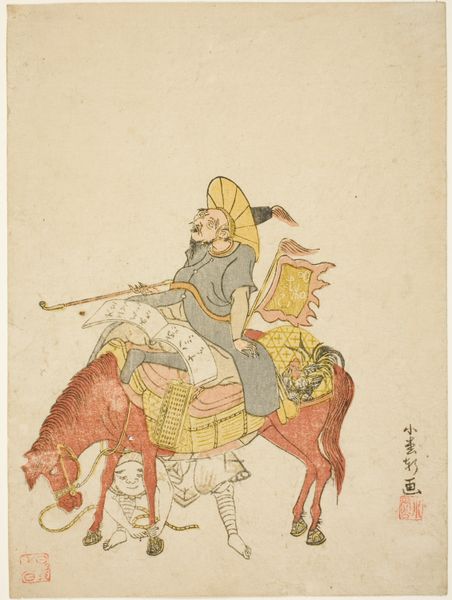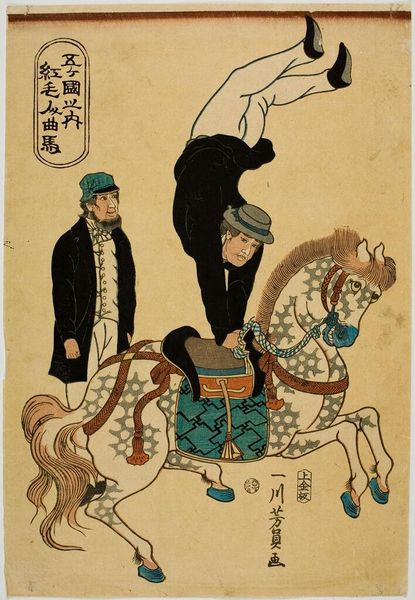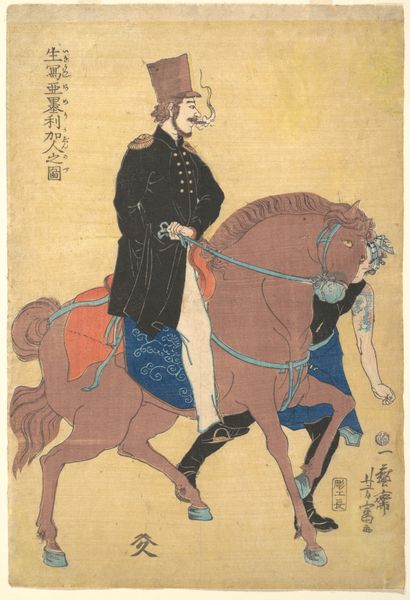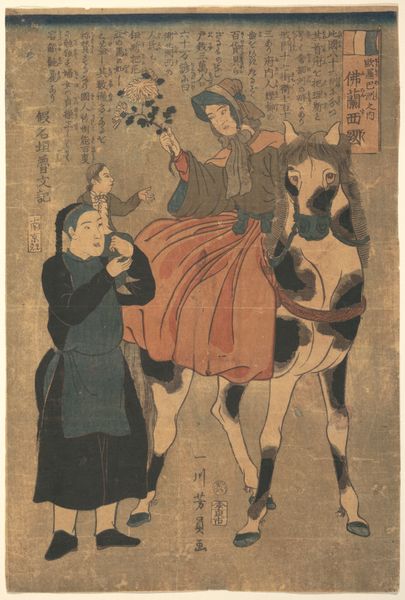
print, ink
# print
#
ukiyo-e
#
japan
#
figuration
#
ink
#
genre-painting
Dimensions: 9 3/16 × 11 9/16 in. (23.4 × 29.4 cm) (image, sheet, uchiwa-e)
Copyright: Public Domain
Curator: This delightful image is "Street Performer with Horse Costume," a print attributed to Yamada Hōgyoku from the 1830s, made with ink. Editor: It strikes me as whimsical. There's a sense of lightness, despite the rather subdued palette, and the simplified form of the horse is quite endearing. It has a folk-art quality. Curator: Precisely. Hōgyoku worked in the ukiyo-e tradition, focusing on the floating world of everyday life. These prints were often made for popular consumption, so the subject matter is often familiar and accessible. This image captures an itinerant performer, a figure operating on the margins of the social structure, offering fleeting moments of entertainment. Editor: The fact that the performer and the horse are effectively one unit – the person providing the legs and life-force, and the horse merely a colorful costume – it really speaks to issues of labor, doesn’t it? Who truly benefits from this performance? What are the underlying power dynamics? It also suggests a certain lack of stability, a precarious existence dictated by public whim. Curator: That’s a compelling reading. The ukiyo-e tradition itself evolved within a complex web of social forces. It emerged during a period of relative peace and prosperity in Japan but also amidst rigid class structures. Art became increasingly tied to social class in early 1700's. Artists working within that period would use various strategies when depicting the social classes to not be too subversive, or revolutionary for its time. Editor: Look at the details: the straw sandals, the simple hat, and the minimal detail to the performer’s face –almost suggesting anonymity. There is a narrative of resistance built within such portrayals of the working class, especially if placed alongside more glamorous or idealized prints of courtesans or samurai. Curator: Definitely. And think of the performance itself. What does it mean to impersonate an animal for the amusement of others? What ideas about culture are presented within that performance? This artwork creates space to question those types of subjects that still stand within the culture and public spaces to this day. Editor: This quick consideration makes you realize the image is actually full of potential readings – economic disparity, performance, identity, the blurred lines between human and animal, fact and fiction. A testament to art’s ongoing role as a tool for socio-political engagement. Curator: Indeed. Hopefully, by investigating these kinds of objects more deeply, we may question our perspectives.
Comments
No comments
Be the first to comment and join the conversation on the ultimate creative platform.
